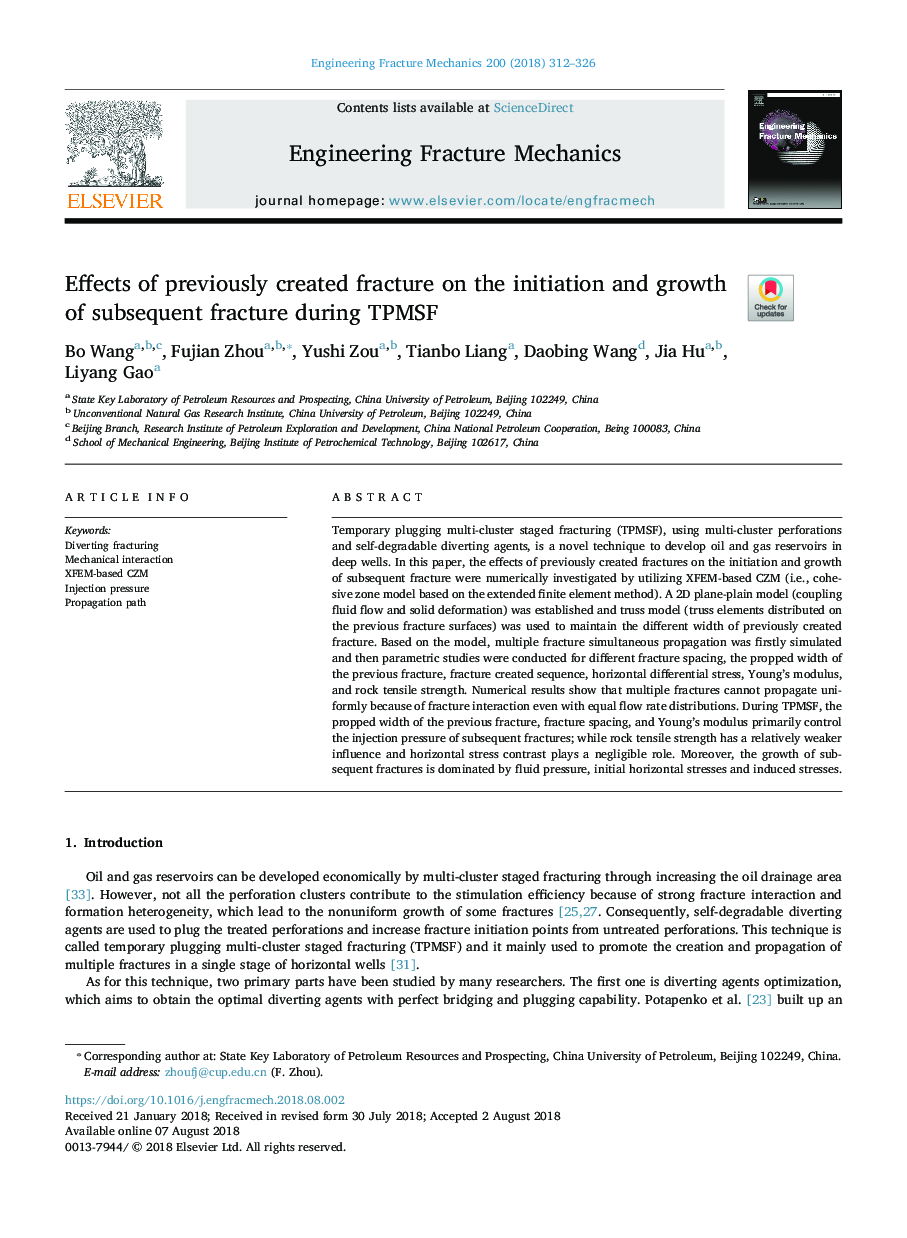| Article ID | Journal | Published Year | Pages | File Type |
|---|---|---|---|---|
| 7168621 | Engineering Fracture Mechanics | 2018 | 15 Pages |
Abstract
Temporary plugging multi-cluster staged fracturing (TPMSF), using multi-cluster perforations and self-degradable diverting agents, is a novel technique to develop oil and gas reservoirs in deep wells. In this paper, the effects of previously created fractures on the initiation and growth of subsequent fracture were numerically investigated by utilizing XFEM-based CZM (i.e., cohesive zone model based on the extended finite element method). A 2D plane-plain model (coupling fluid flow and solid deformation) was established and truss model (truss elements distributed on the previous fracture surfaces) was used to maintain the different width of previously created fracture. Based on the model, multiple fracture simultaneous propagation was firstly simulated and then parametric studies were conducted for different fracture spacing, the propped width of the previous fracture, fracture created sequence, horizontal differential stress, Young's modulus, and rock tensile strength. Numerical results show that multiple fractures cannot propagate uniformly because of fracture interaction even with equal flow rate distributions. During TPMSF, the propped width of the previous fracture, fracture spacing, and Young's modulus primarily control the injection pressure of subsequent fractures; while rock tensile strength has a relatively weaker influence and horizontal stress contrast plays a negligible role. Moreover, the growth of subsequent fractures is dominated by fluid pressure, initial horizontal stresses and induced stresses.
Related Topics
Physical Sciences and Engineering
Engineering
Mechanical Engineering
Authors
Bo Wang, Fujian Zhou, Yushi Zou, Tianbo Liang, Daobing Wang, Jia Hu, Liyang Gao,
